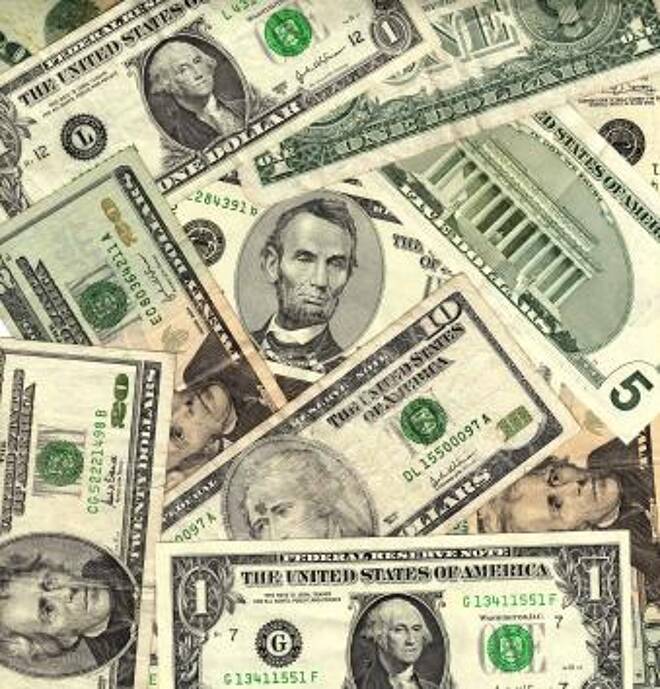Advertisement
Advertisement
Fed Rate Hike Uncertainty Drives Investors From U.S. Dollar
By:
The U.S. Dollar was the key market driver last week as the Greenback spent most of the time on the downside due to expectations the Fed would not raise
The U.S. Dollar was the key market driver last week as the Greenback spent most of the time on the downside due to expectations the Fed would not raise interest rates in 2015. According to data released late last week by the Commodity Futures Trading Commission, speculators reduced bullish bets on the U.S. Dollar in the latest week to their lowest level in more than a year.
The data also showed that the value of the dollar’s net long positions dropped to $18.87 billion in the week-ended October 13, from $20.89 billion the year before. After breaking from the October 9 close at 94.88 to 93.83 on October 15, the December U.S. Dollar Index rebounded to 94.59 to end the week, driven by short-covering, triggered by a better-than-expected U.S. consumer inflation report.
December Comex Gold rallied to a 3 ½ month high last week. The catalyst behind the move was the weaker dollar. Gold is up sharply since the weaker-than-expected U.S. Non-Farm Payrolls report on October 2 for the most part took a December 2015 Fed rate hike off the table. Gold, as a non-interest paying asset, benefits from ultra-low interest rates.
The EUR/USD rallied early in the week, but ended up lower on fresh thoughts that the European Central Bank may provide stimulus to help the Euro Zone economy. Additionally, ECB policymaker Ewald Nowotny said it was now “obvious” the bank must do more to stimulate the Euro Zone economy. ‘
The GBP/USD finished higher despite consumer inflation falling to 0.1%. The U.K. labor market showed some improvement, falling from 5.5% to 5.4%.
The USD/JPY closed surprisingly lower. The catalysts behind the selling pressure were a drop in China’s imports and exports in September and a dovish outlook from U.S. economic data and Fed members. The weak data from China led to a flight-to-safety rally in the Japanese Yen early in the week.
The inability to rally along with the stock indices (ala the carry trade) suggests that the general consensus may be shifting towards a stronger Yen.
Helping to support the Japanese Yen were comments from Bank of Japan Governor Haruhiko Kuroda who told CNBC that Japan’s inflation rate was in line with the central bank’s expectations. “If necessary, we can further ease our monetary policy but at this moment the inflation dynamics is as we anticipated. So, at this stage we just continue QE, but if necessary we can adjust.”
Crude oil finished down 4.83%. The catalyst behind the selling was an International Energy Agency report which predicted that the global market would remain oversupplied through 2016. Last week’s U.S. Energy Information Administration’s inventories report was also bearish, increasing 7.6 million barrels for the week-ended October 9. The rise in inventories was being blamed on a drop in refinery utilization to 86% of capacity from 87.5% a week earlier.
About the Author
James Hyerczykauthor
James is a Florida-based technical analyst, market researcher, educator and trader with 35+ years of experience. He is an expert in the area of patterns, price and time analysis as it applies to futures, Forex, and stocks.
Did you find this article useful?
Latest news and analysis
Advertisement
